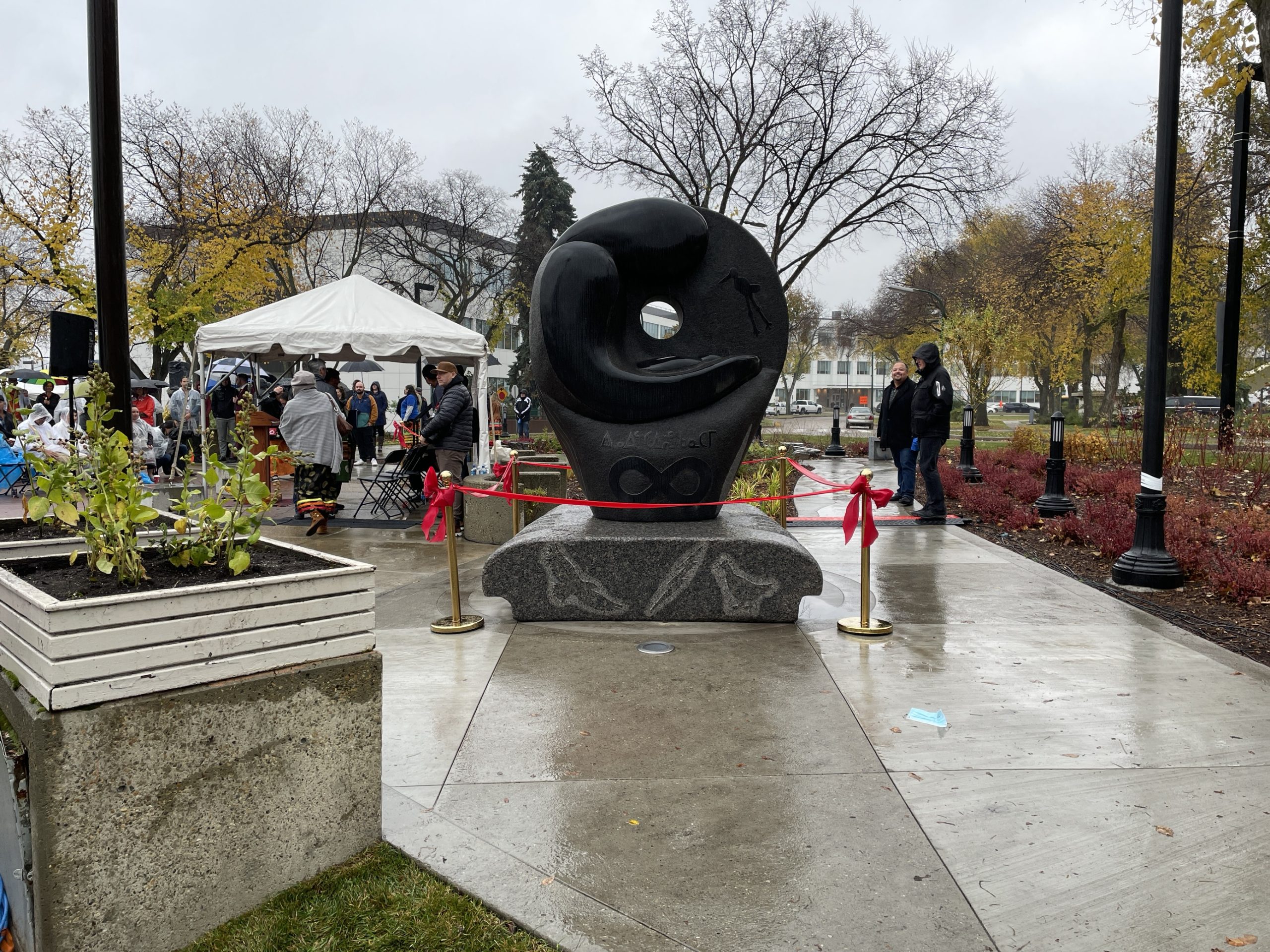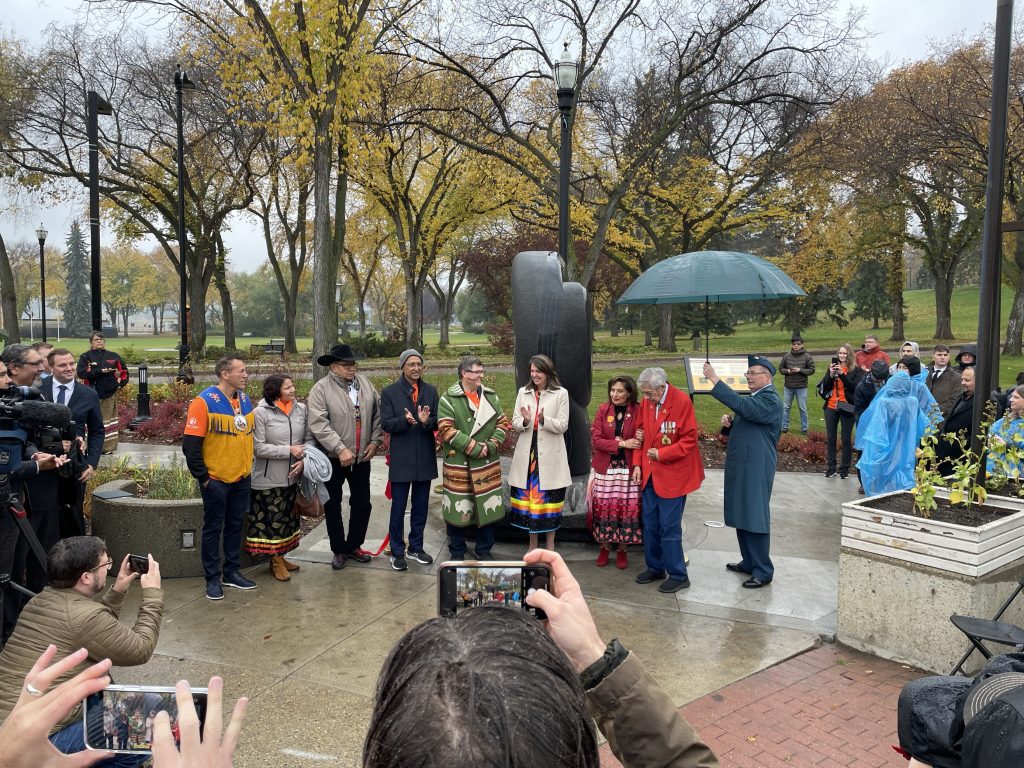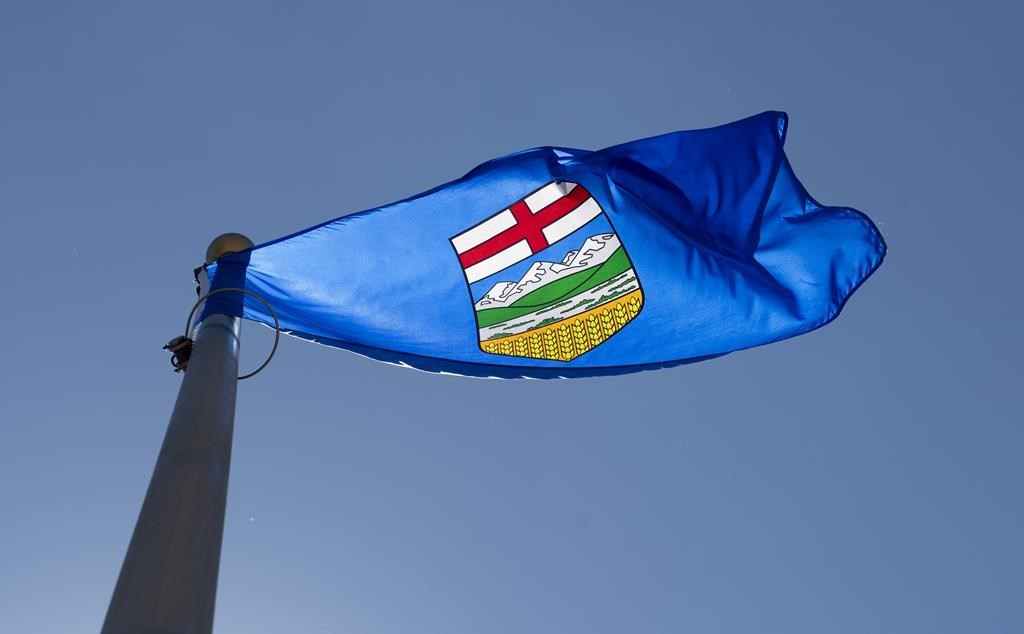Province unveils reconciliation monument
Posted September 29, 2023 4:36 pm.
Last Updated September 30, 2023 7:58 am.
Friends, family, and a community came together at the legislature to remember all who were affected by residential schools. The monument unveiled is a symbol of change and remembrance, to ensure a better future in our province and across the country.
“For the community to honour our loved ones, like my mother who’s a survivor, his kookum who’s a survivor of those awful places. To come together to show that support, it means a lot,” said an Edmontonian at the legislature.
The garden and monument that were unveiled highlights the province’s goal towards reconciliation.
“This garden is a meaningful and heartfelt symbol of Alberta’s commitment to reconciliation with Indigenous Peoples. It represents the resiliency, power and beauty of Indigenous cultures and traditions, and opening it today is a fitting way to lead into the Day for Truth and Reconciliation,” said Premier Danielle Smith.

Monument unveiled at the Alberta Legislature as part of province’s goal towards reconciliation. (Photo Credit: Adam Ziccarelli, CityNews)
“It’s a special place for us to be able to come and definitely a highlight I think in the city for us to continue with,” said Melissa Nollski, Executive Director of Amiskwaciy Cultural Society.
This stone sculpture called “mother earth circling: healing from the residential school experience” was created by a Saddle Lake Cree Nation artist Stewart Steinhauer.
Steinhauer’s sculpture includes many Indigenous petroglyphs and symbols that create a narrative about the history of Turtle Island (North America) and the impact of residential schools. The central theme of the monument is the need for healing from that trauma.
The province notes a guide to interpreting the sculpture is available online so that visitors can appreciate its details. Adding it was chosen by an Indigenous advisory panel following a call for submissions from the province.
“We are proud to share this space with the public. We must acknowledge and understand the dark legacy of Canada’s residential school system and its intergenerational effects. Many thanks to the Elders and the Indigenous panel who helped guide us, and to Stewart Steinhauer for the remarkable sculpture. This is the kind of collaboration that is key to reconciliation,” said Rick Wilson, Minister of Indigenous Relations.
Monuments like this, are part of the calls to action from the Truth and Reconciliation Commission.
“Hits home to where we are, the children we serve, the families we serve. It’s a day for us to honour our people, the children, and each other in rising up as they said and continuing the work we are doing,” said Nollski.



The statue and garden sit around a linden tree that was planted in 2021 as a symbol of reconciliation. A space to reflect in the province that had the most residential schools.
“I always say a safer Canada for Indigenous people is a safer Canada for everybody. And I think step by step we’re going to get there together.”








